Chapter 9 Initialize with genomic data
circlize is quite flexible to initialize the circular plot not only by chromosomes, but also by any type of general genomic categories.
9.1 Initialize with cytoband data
Cytoband data is an ideal data source to initialize genomic plots. It contains length of chromosomes as well as so called “chromosome band” annotation to help to identify positions on chromosomes.
9.1.1 Basic usage
If you work on human genome, the most straightforward way is to directly use
circos.initializeWithIdeogram() (Figure 9.1).
By default, the function creates a track with chromosome name
and axes, and a track of ideograms.
Although chromosome names added to the plot are pure numeric, actually the internally names have the “chr” index. When you adding more tracks, the chromosome names should also have “chr” index.
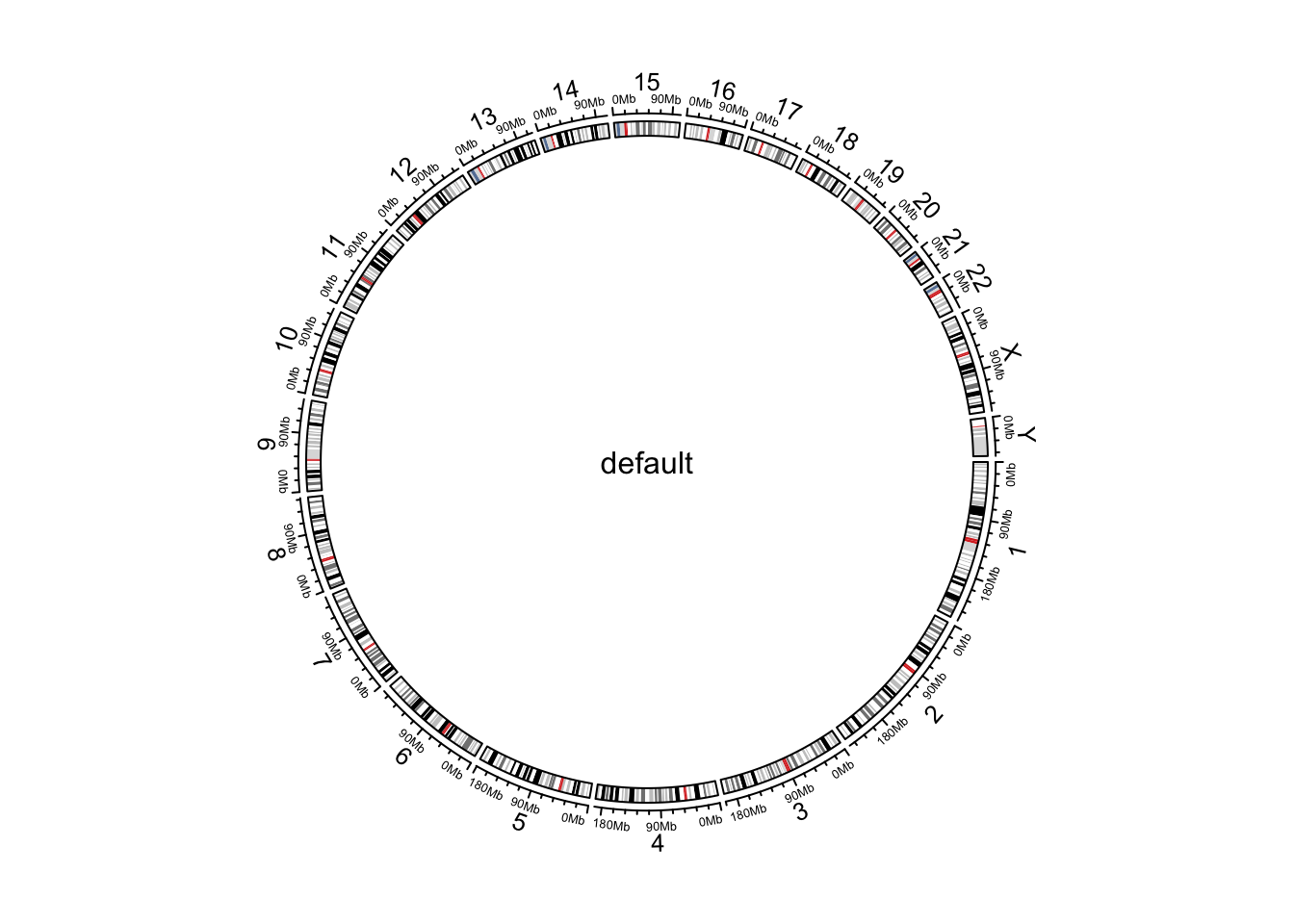
Figure 9.1: Initialize genomic plot, default.
## All your sectors:
## [1] "chr1" "chr2" "chr3" "chr4" "chr5" "chr6" "chr7" "chr8" "chr9"
## [10] "chr10" "chr11" "chr12" "chr13" "chr14" "chr15" "chr16" "chr17" "chr18"
## [19] "chr19" "chr20" "chr21" "chr22" "chrX" "chrY"
##
## All your tracks:
## [1] 1 2
##
## Your current sector.index is chrY
## Your current track.index is 2By default, circos.initializeWithIdeogram() initializes the plot with
cytoband data of human genome hg19. Users can also initialize with other
species by specifying species argument and it will automatically download
cytoband files for corresponding species.
When you are dealing rare species and there is no cytoband data available yet,
circos.initializeWithIdeogram() will try to continue to download the
“chromInfo” file form UCSC, which also contains lengths of chromosomes, but of
course, there is no ideogram track on the plot.
In some cases, when there is no internet connection for downloading or there is
no corresponding data avaiable on UCSC yet. You can manually construct a data frame
which contains ranges of chromosomes or a file path if it is stored in a file,
and sent to circos.initializeWithIdeogram().
cytoband.file = system.file(package = "circlize", "extdata", "cytoBand.txt")
circos.initializeWithIdeogram(cytoband.file)
cytoband.df = read.table(cytoband.file, colClasses = c("character", "numeric",
"numeric", "character", "character"), sep = "\t")
circos.initializeWithIdeogram(cytoband.df)If you read cytoband data directly from file, please explicitly specify
colClasses arguments and set the class of position columns as numeric. The
reason is since positions are represented as integers, read.table would
treat those numbers as integer by default. In initialization of circular
plot, circlize needs to calculate the summation of all chromosome lengths.
The summation of such large integers would throw error of integer overflow.
By default, circos.intializeWithIdeogram() uses all chromosomes which are
available in cytoband data to initialize the circular plot. Users can
choose a subset of chromosomes by specifying chromosome.index. This
argument is also for ordering chromosomes (Figure 9.2).
circos.initializeWithIdeogram(chromosome.index = paste0("chr", c(3,5,2,8)))
text(0, 0, "subset of chromosomes", cex = 1)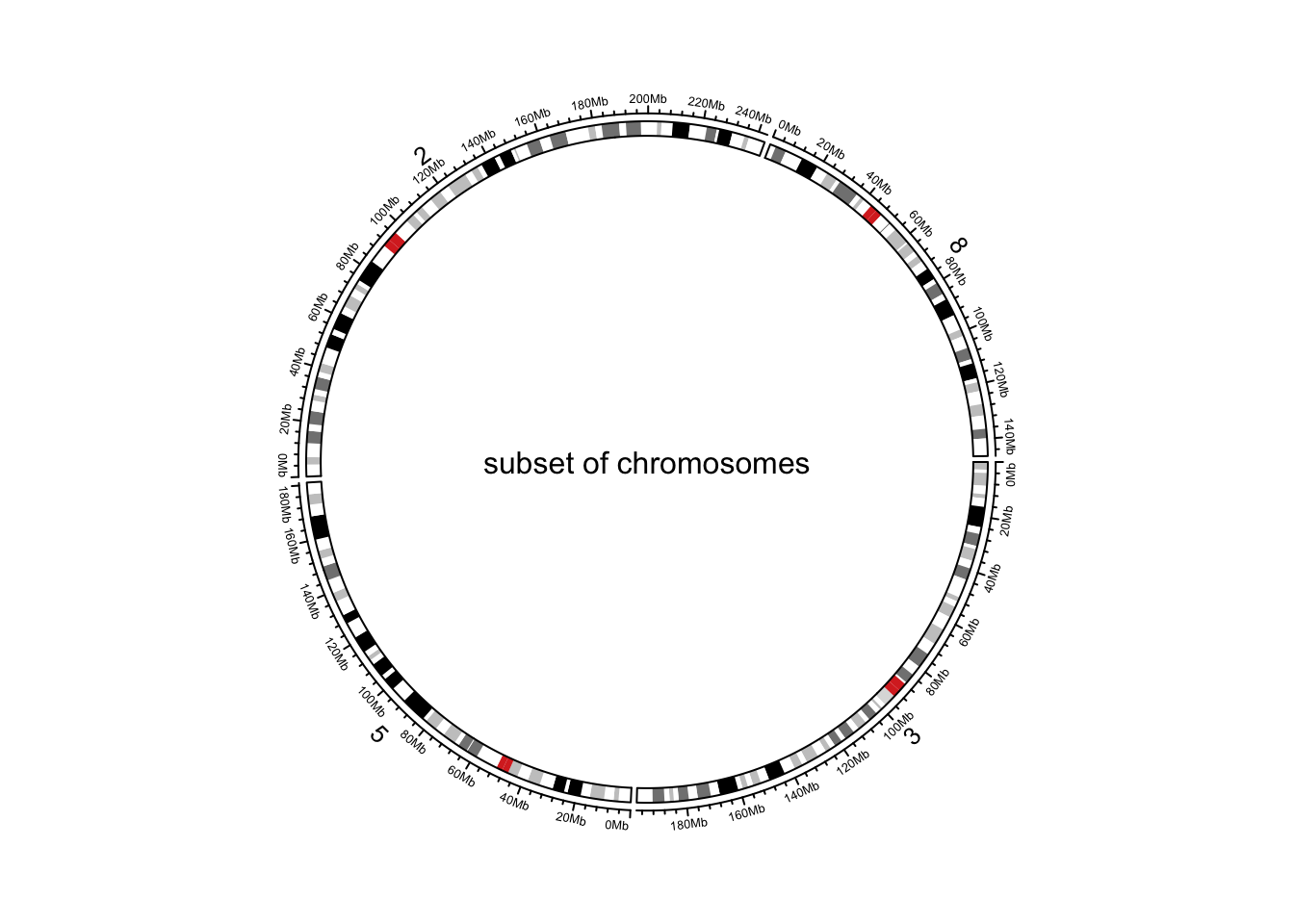
Figure 9.2: Initialize genomic plot, subset chromosomes.
When there is no cytoband data for the specified species, and when chromInfo data
is used instead, there may be many many extra short contigs. chromosome.index
can also be useful to remove unnecessary contigs.
9.1.2 Pre-defined tracks
After the initialization of the circular plot,
circos.initializeWithIdeogram() additionally creates a track where there are
genomic axes and chromosome names, and create another track where there is an
ideogram (depends on whether cytoband data is available). plotType argument
is used to control which type of tracks to add. (figure Figure 9.3).
circos.initializeWithIdeogram(plotType = c("axis", "labels"))
text(0, 0, "plotType = c('axis', 'labels')", cex = 1)
circos.clear()
circos.initializeWithIdeogram(plotType = NULL)
text(0, 0, "plotType = NULL", cex = 1)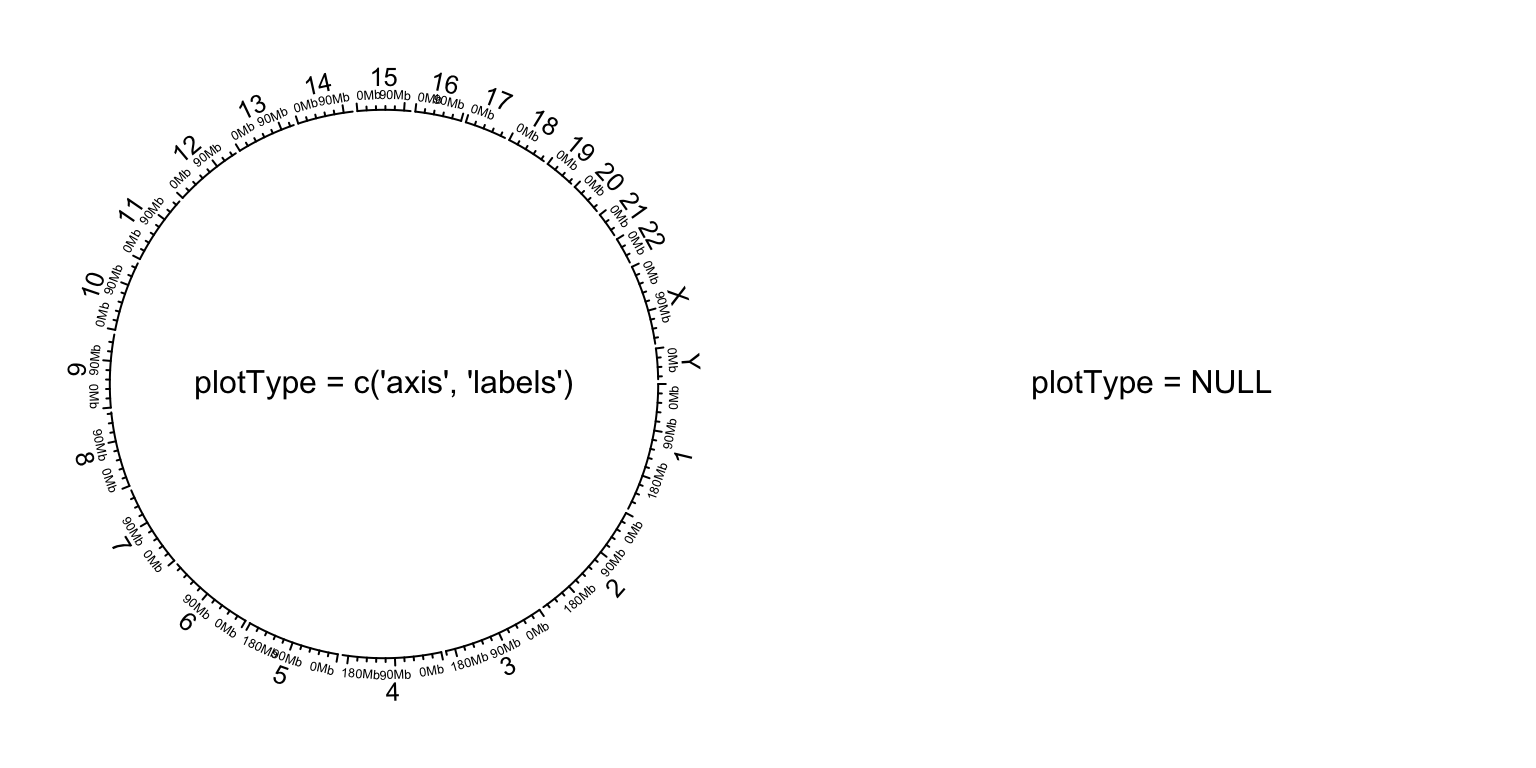
Figure 9.3: Initialize genomic plot, control tracks.
9.1.3 Other general settings
Similar as general circular plot, the parameters for the layout can be
controlled by circos.par() (Figure 9.4).
Do remember when you explicitly set circos.par(), you need to call circos.clear()
to finish the plotting.
circos.par("start.degree" = 90)
circos.initializeWithIdeogram()
circos.clear()
text(0, 0, "'start.degree' = 90", cex = 1)
circos.par("gap.degree" = rep(c(2, 4), 12))
circos.initializeWithIdeogram()
circos.clear()
text(0, 0, "'gap.degree' = rep(c(2, 4), 12)", cex = 1)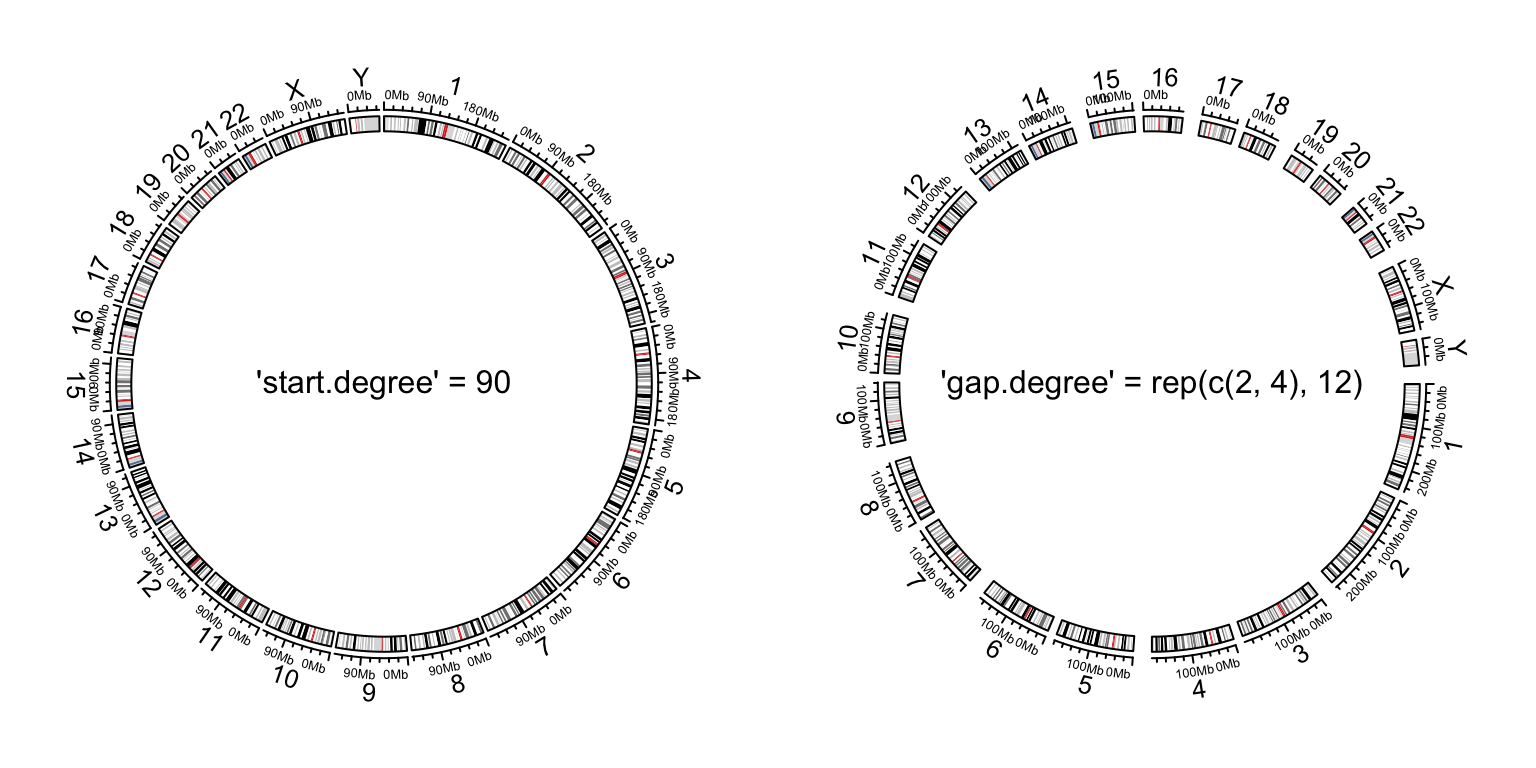
Figure 9.4: Initialize genomic plot, control layout.
9.2 Customize chromosome track
By default circos.initializeWithIdeogram() initializes the layout and adds
two tracks. When plotType argument is set to NULL, the circular layout is
only initialized but nothing is added. This makes it possible for users to
completely design their own style of chromosome track.
In the following example, we use different colors to represent chromosomes and put chromosome names in the center of each cell (Figure 9.5).
set.seed(123)
circos.initializeWithIdeogram(plotType = NULL)
circos.track(ylim = c(0, 1), panel.fun = function(x, y) {
chr = CELL_META$sector.index
xlim = CELL_META$xlim
ylim = CELL_META$ylim
circos.rect(xlim[1], 0, xlim[2], 1, col = rand_color(1))
circos.text(mean(xlim), mean(ylim), chr, cex = 0.7, col = "white",
facing = "inside", niceFacing = TRUE)
}, track.height = 0.15, bg.border = NA)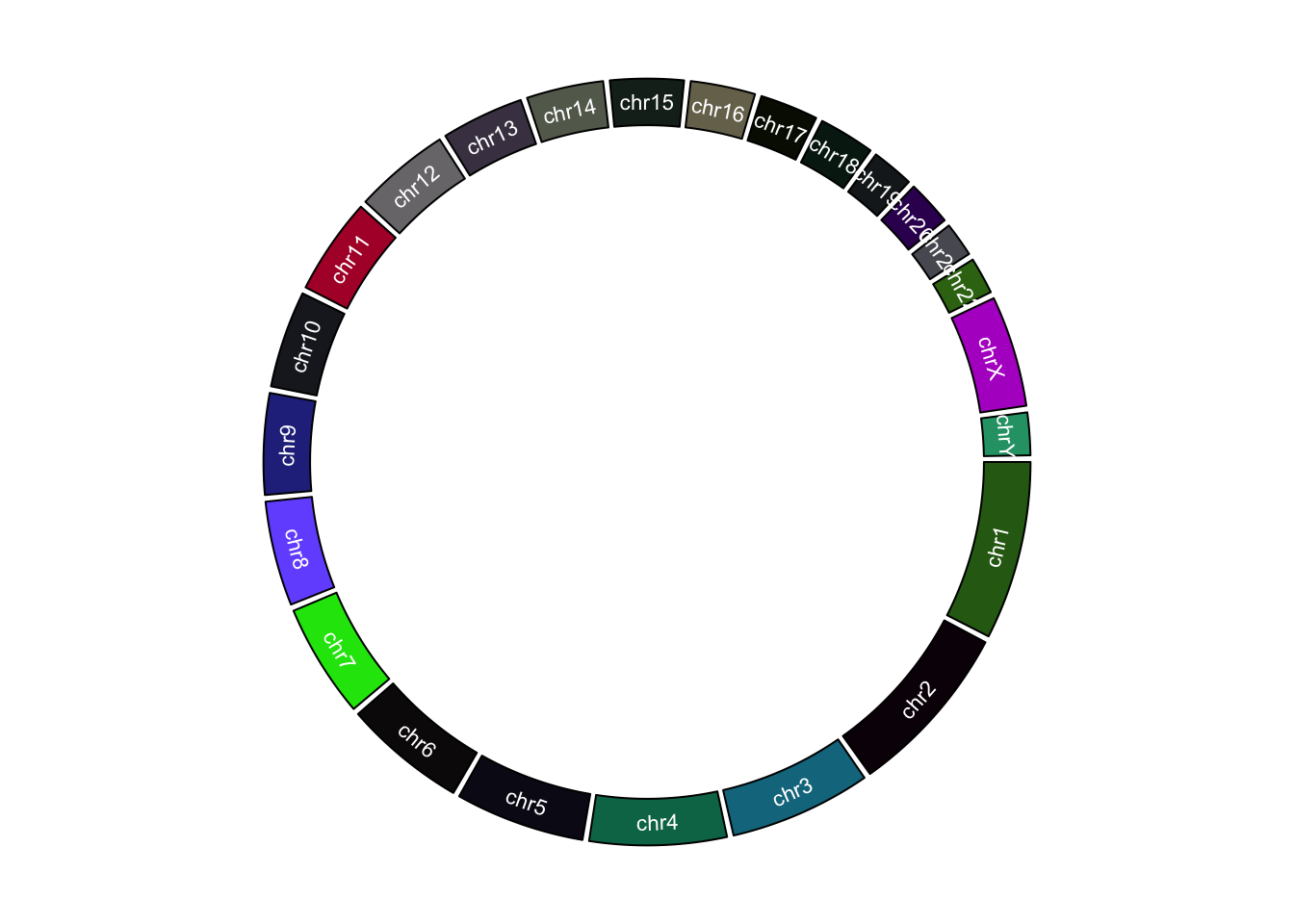
Figure 9.5: Customize chromosome track.
9.3 Initialize with general genomic category
Chromosome is just a special case of genomic category.
circos.genomicInitialize() can initialize circular layout with any type of
genomic categories. In fact, circos.initializeWithIdeogram() is implemented
by circos.genomicInitialize(). The input data for
circos.genomicInitialize() is also a data frame with at least three columns.
The first column is genomic category (for cytoband data, it is chromosome
name), and the next two columns are positions in each genomic category. The
range in each category will be inferred as the minimum position and the
maximum position in corresponding category.
In the following example, a circular plot is initialized with three genes.
df = data.frame(
name = c("TP53", "TP63", "TP73"),
start = c(7565097, 189349205, 3569084),
end = c(7590856, 189615068, 3652765))
circos.genomicInitialize(df)Note it is not necessary that the record for each gene is only one row.
In following example, we plot the transcripts for TP53, TP63 and TP73 in a circular layout (Figure 9.6).
tp_family = readRDS(system.file(package = "circlize", "extdata", "tp_family_df.rds"))
head(tp_family)## gene start end transcript exon
## 1 TP53 7565097 7565332 ENST00000413465.2 7
## 2 TP53 7577499 7577608 ENST00000413465.2 6
## 3 TP53 7578177 7578289 ENST00000413465.2 5
## 4 TP53 7578371 7578554 ENST00000413465.2 4
## 5 TP53 7579312 7579590 ENST00000413465.2 3
## 6 TP53 7579700 7579721 ENST00000413465.2 2In the following code, we first create a track which identifies three genes.
circos.genomicInitialize(tp_family)
circos.track(ylim = c(0, 1),
bg.col = c("#FF000040", "#00FF0040", "#0000FF40"),
bg.border = NA, track.height = 0.05)Next, we put transcripts one after the other for each gene. It is simply to
add lines and rectangles. The usage of circos.genomicTrack() and
circos.genomicRect() will be discussed in Chapter 10.
n = max(tapply(tp_family$transcript, tp_family$gene, function(x) length(unique(x))))
circos.genomicTrack(tp_family, ylim = c(0.5, n + 0.5),
panel.fun = function(region, value, ...) {
all_tx = unique(value$transcript)
for(i in seq_along(all_tx)) {
l = value$transcript == all_tx[i]
# for each transcript
current_tx_start = min(region[l, 1])
current_tx_end = max(region[l, 2])
circos.lines(c(current_tx_start, current_tx_end),
c(n - i + 1, n - i + 1), col = "#CCCCCC")
circos.genomicRect(region[l, , drop = FALSE], ytop = n - i + 1 + 0.4,
ybottom = n - i + 1 - 0.4, col = "orange", border = NA)
}
}, bg.border = NA, track.height = 0.4)
circos.clear()
Figure 9.6: Circular representation of alternative transcripts for genes.
In Figure 9.6, you may notice the start of axes
becomes “0KB” while not the original values. It is just an adjustment of the
axes labels to reflect the relative distance to the start of each gene, while
the coordinate in the cells are still using the original values. Set
tickLabelsStartFromZero to FALSE to recover axes labels to the original
values.
9.4 Zooming chromosomes
The strategy is the same as introduced in Section 7.1.
We first define a function extend_chromosomes() which copy data in subset of
chromosomes into the original data frame.
extend_chromosomes = function(bed, chromosome, prefix = "zoom_") {
zoom_bed = bed[bed[[1]] %in% chromosome, , drop = FALSE]
zoom_bed[[1]] = paste0(prefix, zoom_bed[[1]])
rbind(bed, zoom_bed)
}We use read.cytoband() to download and read cytoband data from UCSC. In following,
x ranges for normal chromosomes and zoomed chromosomes are normalized separetely.
cytoband = read.cytoband()
cytoband_df = cytoband$df
chromosome = cytoband$chromosome
xrange = c(cytoband$chr.len, cytoband$chr.len[c("chr1", "chr2")])
normal_chr_index = 1:24
zoomed_chr_index = 25:26
# normalize in normal chromsomes and zoomed chromosomes separately
sector.width = c(xrange[normal_chr_index] / sum(xrange[normal_chr_index]),
xrange[zoomed_chr_index] / sum(xrange[zoomed_chr_index])) The extended cytoband data which is in form of a data frame is sent to
circos.initializeWithIdeogram(). You can see the ideograms for chromosome 1
and 2 are zoomed (Figure 9.7).
circos.par(start.degree = 90)
circos.initializeWithIdeogram(extend_chromosomes(cytoband_df, c("chr1", "chr2")),
sector.width = sector.width)Add a new track.
bed = generateRandomBed(500)
circos.genomicTrack(extend_chromosomes(bed, c("chr1", "chr2")),
panel.fun = function(region, value, ...) {
circos.genomicPoints(region, value, pch = 16, cex = 0.3)
})Add a link from original chromosome to the zoomed chromosome (Figure 9.7).
circos.link("chr1", get.cell.meta.data("cell.xlim", sector.index = "chr1"),
"zoom_chr1", get.cell.meta.data("cell.xlim", sector.index = "zoom_chr1"),
col = "#00000020", border = NA)
circos.clear()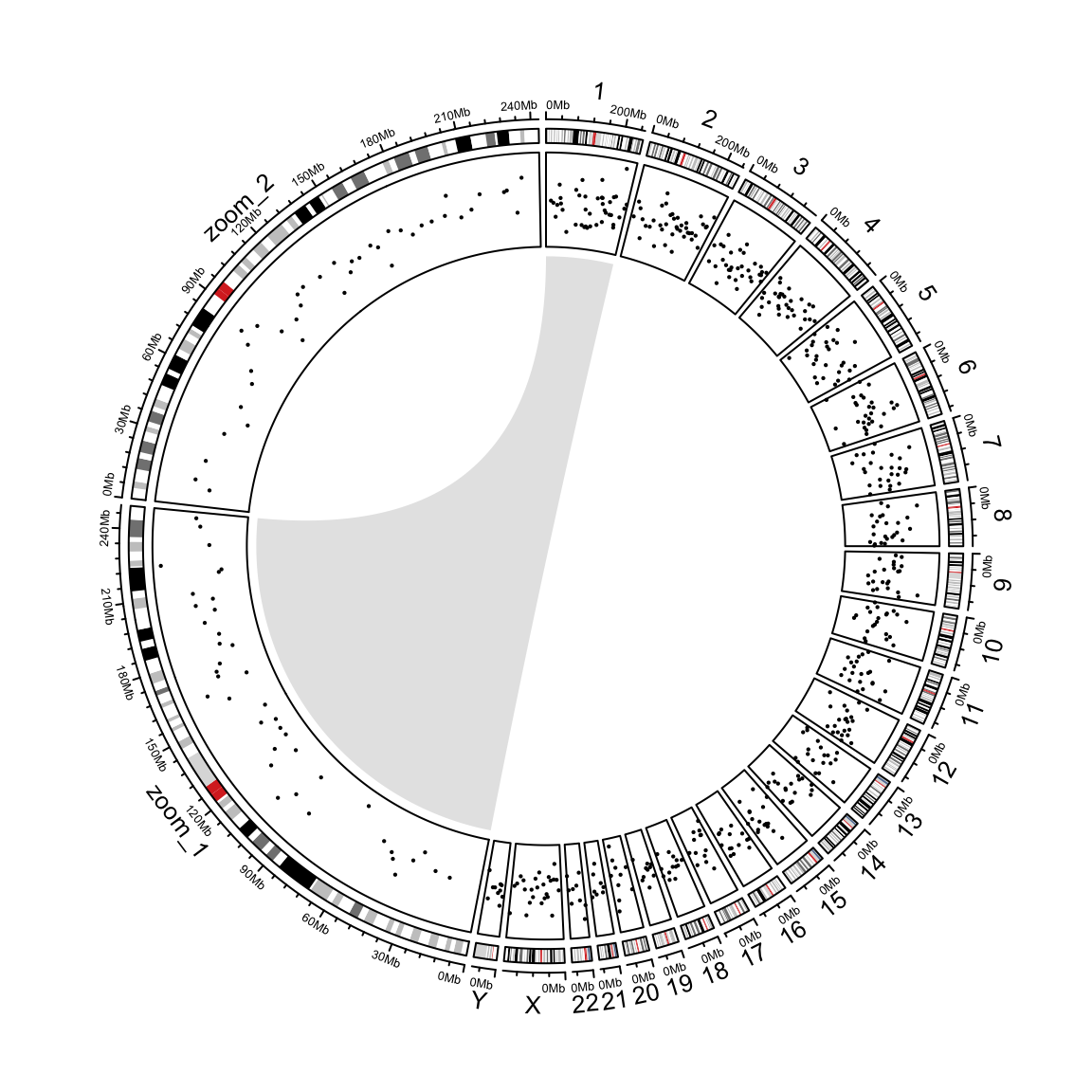
Figure 9.7: Zoom chromosomes.